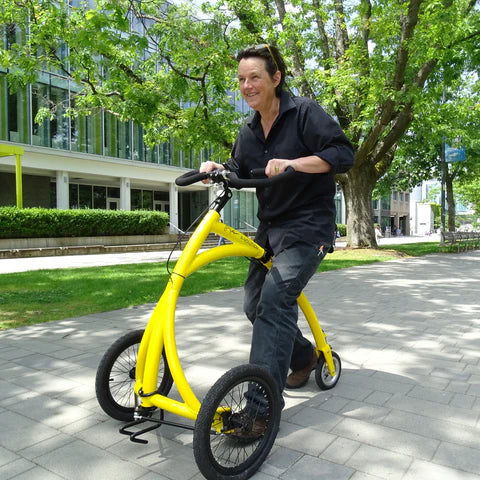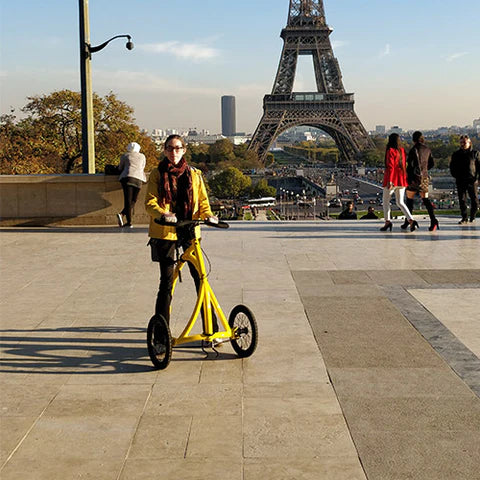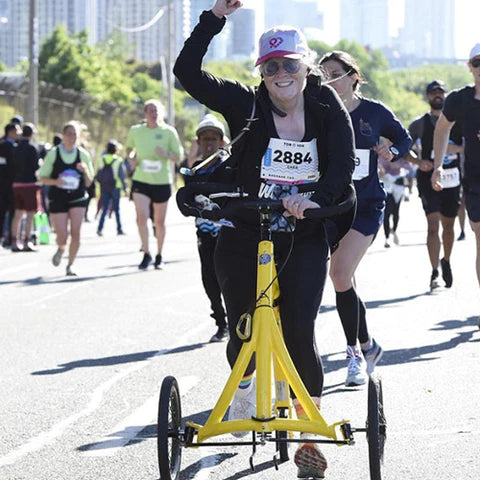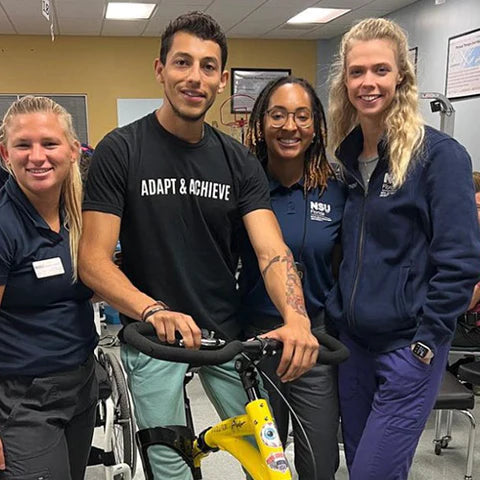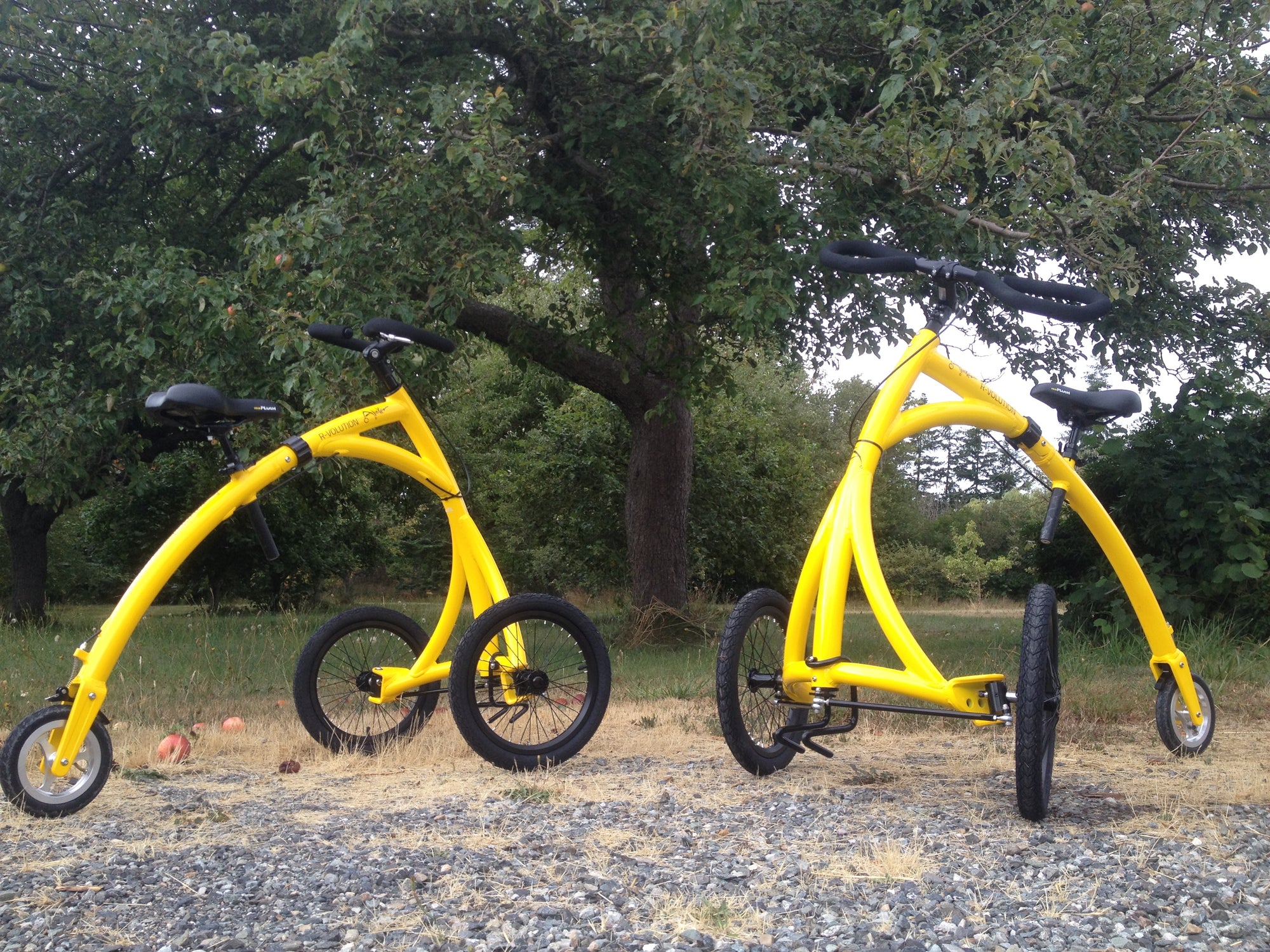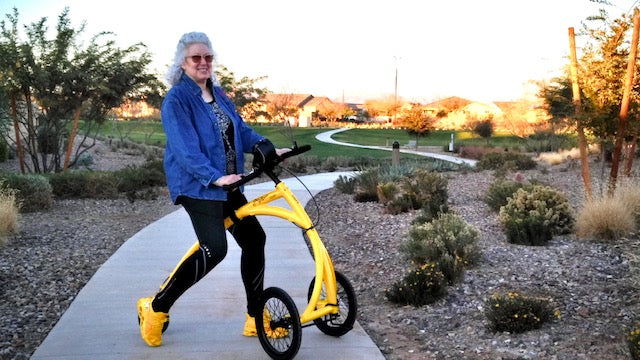Flying is stressful at the best of times. But when you add in the additional complexity of limited mobility, cumbersome medical equipment, and the need for assistance, it can be outright daunting. But air travel with a disability doesn’t need to be intimidating, you just need to be prepared.
One of our team members, Sergio Robelto, has flown numerous times around the US, and back and forth to his hometown in Colombia, with his wheelchair. We spoke to Sergio about his experiences of flying with a disability, and with his advice we've put together this guide to traveling with a disability.
Make a Plan for What You’ll Need
“The first times, I think, we’re probably the hardest ones,” Sergio said. “Depending on where you are in your journey, if it’s recent, if it’s not. When I first traveled, it was within maybe 6 months or a year of my accident, so I didn’t know how to think about my body.”
If you’re not only new to traveling with a disability, but new to living with a disability, you might not be able to predict exactly what you’ll need for an extended trip, or for the experience of sitting on an airplane. So it’s best to plan far in advance.
Talk to your doctor in advance of your trip to discuss any possible complications from air travel, as well as any medications / vaccinations, or additional medical equipment you may need. Obtaining a written note from your healthcare provider, while not necessary, can also be helpful in reducing hassle at security with medical equipment or medications.
Make a plan for the bathroom. “I know that there are planes where it’s big enough for you to go, but I haven’t experienced that,” Sergio said. “So you have to prepare for the bathroom, if it’s a long ride, you have to figure out how to stay for the whole plane.”
Many smaller planes used for domestic flights, and increasingly for international flights, do not have accessible bathrooms. Similarly, many domestic flights don’t have an onboard wheelchair unless it is specifically requested in advance. If your disability limits you from being able to walk to the bathroom, talk to your doctor about medical equipment, such as a catheter, that will enable you to remain seated through the whole flight if an accessible bathroom is not an option.
Know Your Rights
Familiarize yourself with the legislation pertaining to accessible air travel, so you’re ready to advocate for yourself should any conflict arise. In Sergio’s experience, most conflict with the airport or airline staff doesn’t come from any place of malice, but because they’re unfamiliar with your specific needs and the best way to manage them.
The Air Carriers Access Act (ACAA) applies to any US domestic flight, or flight to or from the US, and includes numerous protections for travelers with disabilities. It covers topics such as boarding assistance, bathroom-access requirements, wheelchair storage requirements, and more. It also covers complaint procedures should you find yourself in the unfortunate circumstance of having your rights violated.
In Canada, the Canadian Transportation Agency has published the Accessible Transportation for Persons with Disabilities Regulations, which covers similar topics for ground and air travel. They've also published "Take Charge of Your Travel: A Guide for Travellers with Disabilities" which is a fairly robust guide that will help both Canadian and international travellers plan their trip.
Pack Strategically
By law, necessary medical equipment is free to take on a plane and doesn’t count towards your carry-on items. Pack your carry-on with everything you’ll need with you in case of an emergency or long delays, such as necessary meds, your doctor’s notes, and medical alert information.
If you need to bring additional medical equipment for your trip in your checked luggage, inform the airline staff of the bag’s contents so you don’t get charged for it like regular luggage. “I started having two bags, my stuff, and then my medical equipment,” Sergio said. “But I just decided to get just one big bag, so I have to open it and show them that half of my stuff is actually mine, and half of the other stuff is medical equipment, so they don’t charge you for it. I take more medical equipment than my personal equipment.”
Give Yourself Plenty of Time
You’re not required to inform the airline in advance if you’re traveling with a mobility aid or require assistance, but it can be helpful in ensuring you get the assistance you need. “When you actually purchase the flight, you can put in there that you have medical equipment or that you have a wheelchair, that you are disabled pretty much,” Sergio said.
However, even if you’ve informed the airline in advance, it’s best not to assume they’ve planned for your needs, so show up at least two hours early for your flight and give yourself plenty of time to navigate the airport. “When you get to the airport, the first thing is to check in and let them know that you are going to need assistance,” Sergio said. “Let them know whether you are going to be able to walk to the plane, or if you need an aisle chair to be able to get into the plane.”
Once you’re checked in, the process repeats itself at every step. “Check-in, then you go through TSA, and with TSA it’s easy because there’s a door you go through. It’s not fast, but it’s easy. You get to the door right away, but then you have to wait for somebody to pat you down, to pat your chair down. So that usually takes some time for somebody to come and do that. And then you get to the door, and you do the same process. It’s the same process three times.”
Keep Your Mobility Aid With You
One of the biggest issues with air travel and disabilities is damaged or lost mobility devices. While airlines are responsible for repairs or replacement to damaged and lost mobility devices, the process can be lengthy, which isn’t very helpful when you get off the plane on the other side and don’t have your device available. “I’ve been very blessed that I haven’t had any of my wheelchairs broken, but I have had a lot of friends who have had their tires broken, their handlebars,” Sergio said. “Even for us to get it fixed for our insurance, sometimes it takes months.”
Most airlines will recommend you transfer to an airport chair at check-in, so they can check your wheelchair. This isn’t necessary, and you are free to say no. “I never let go of my chair,” Sergio said. “They suggest you take the airport chair, but I say nope. I’m unable to walk, I’m not getting out of my chair.”
You are legally allowed to keep your own mobility device with you right up until you board the plane, and doing so is the best way to ensure your device gets to where you’re going safely.
“You get into the plane, they bring the aisle chair. I transfer to the aisle chair, then I take all the things from my wheelchair that I don’t want to break or anything,” Sergio said. “I put them in the bag that I have with the medical equipment, and then they take the chair down. I let them know that I need my chair right away, so that’s the last thing that they put in the plane.”
Communicate
“The airport is stressful. The staff want to help but they don’t really know how to,” he said. “They do sometimes have ways that they want to do things. But it’s not necessarily the best way, it’s just ways for them to not be liable. So I’m like, I know that you have one way to do it, but if you listen to me, we can do it easily and it’s going to be safe.”
Traveling with mobility issues can definitely be daunting, but knowing your rights, being prepared, and advocating for yourself will be the best way to ensure your trip goes as smoothly as possible.








